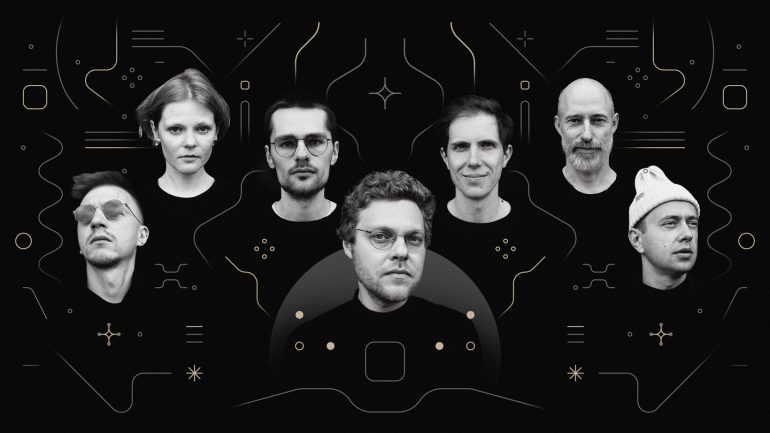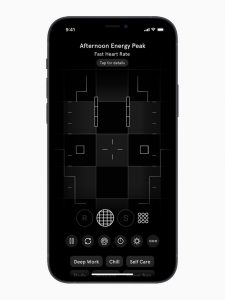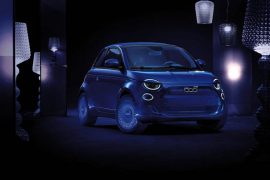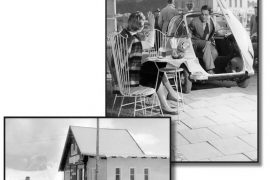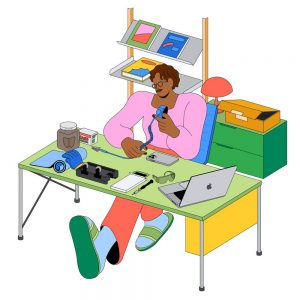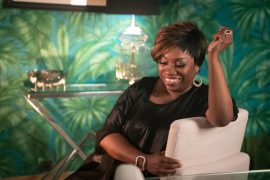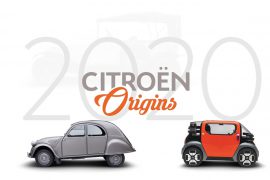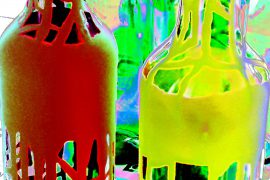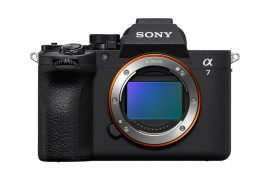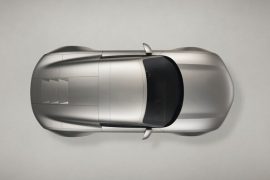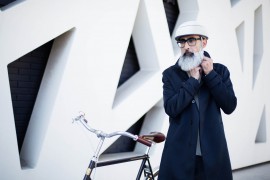STORY/INTERVIEW: A conversation with the developers of the Endel app
The developers of the Endel app on the power of endless ambient music
Oleg Stavitsky, CEO and co-founder of Endel, is not your typical tech entrepreneur. The former video game journalist is one of six co-founders and describes himself as a producer who brings creative minds together and creates an environment for them to work in. „I pitch an idea and then take a step back,“ he says.
Stavitsky cites ambient sound pioneer and musician Brian Eno and his three-year-old daughter’s tapping around while playing Eno’s Bloom app, released on the first-generation iPad in 2010, as inspiration. Watching his daughter, he was fascinated by the ambient sounds emanating from her fingers as she used the app to create her own artwork. He knew immediately that he wanted to create digital art apps for children and decided to leave the world of journalism and start an app development company.
And so he set about building a team of like-minded art, music and sound enthusiasts. This founding group includes Chief Music Officer Dmitry Evgrafov, a neoclassical composer; Chief Design Officer Protey Temen, a contemporary visual artist; Chief Data Officer Dmitry Bezugly; Chief Technology Officer Kirill Bulatsev; and Chief Product Officer Philipp Petrenko. „It’s a very diverse collective of people, and we just fit together perfectly,“ explains Stavitsky.
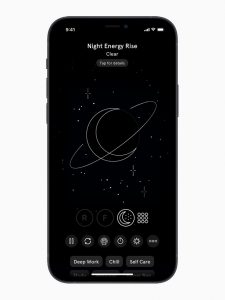
The unexpected composition of Endel’s founding team – which, as Stavitsky points out, is more of an artist collective than a traditional app development team – has provided certain synergies around the power of sound. The collective’s first foray into app development was BUBL, a collection of digital art apps for children that combined abstract design, sound and a carefully crafted user interface, released on the App Store in 2013. „They almost looked like paintings by Wassily Kandinsky come to life,“ he says.
„I’ve always been fascinated by the correlation of colour, form and sound,“ Stavitsky says. „It has to do with Kandinsky, who is one of my favourite painters, and at the same time with the minimalist composers of the 70s like Brian Eno, Philip Glass and Steve Reich. And so we’ve also developed a lot of technology for our BUBL apps that generates musical compositions in real time depending on what someone is doing in the app.“
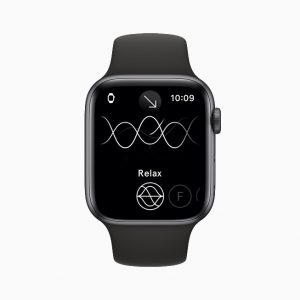
Endel is the natural evolution of such first-of-its-kind digital art apps, bringing personalised, contextualised ambient soundscapes to life in real time on iPhone, iPad, Mac, Apple Watch and soon Apple TV.
„We thought, what if we took these ideas, went back to the 70s and filled them with modern technology?“ describes Stavitsky. „We’re surrounded by these amazing devices that know so much and can do so much for us. Why don’t we harness that and take these ideas from Brian Eno and all the minimalist composers of the 70s to the next level?“
What really sets Endel apart from other music- or sound-based apps is its balance of creativity and science. Endel’s co-founders recognised that certain data was needed to create a personalised experience. They prototyped a native Apple Watch app experience that used influences from the wearer’s environment, including weather, heart rate and natural light, to create an appropriate soundscape unique to that person. The app became the first Apple Watch app of the year in 2020 and currently has more than 300,000 monthly active users:in.
Today, Endel consists of a 30-person team with headquarters in Berlin, a second office in Moscow and additional members spread across Lisbon, London and Los Angeles.
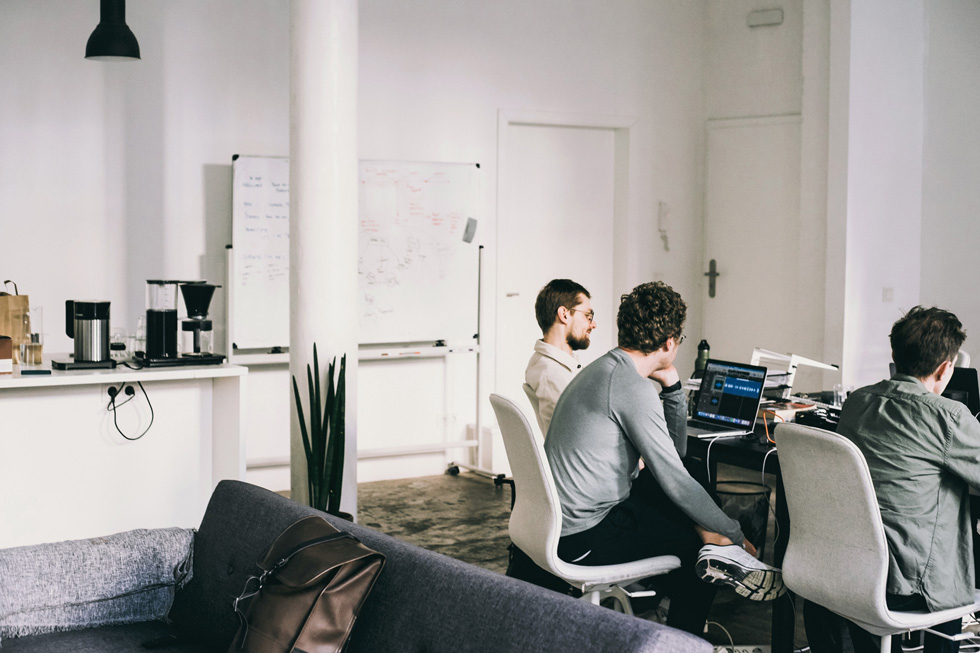

In the US, May is Mental Health Awareness Month. What role do you think sound plays in maintaining a positive cognitive state?
Oleg Stavitsky: I would like to say that because the world is so crazy right now, people are almost self-medicating with sound. With all these playlists out there, people are literally looking for ways to get through the day and protect their cognitive state, hence all these playlists and YouTube videos. And here’s Endel. This is a project designed specifically for that kind of use: It’s scientifically designed to help people achieve a certain cognitive state.
Tell us a little about the science. You recently commissioned a study in collaboration with neuroscience data company Arctop, using their technology to measure and analyse brainwave data in real time. What were some of the findings and what do they reveal about the way people consume music today?
OS: The result of the study was this interactive chart where you could zoom in second by second and see where a part of the soundscape or playlist starts and how the user’s brain reacts to it. We were able to track a person’s brainwave activity. If she was listening to a static playlist, a certain song would start and everything would be fine, but then another song would start and the concentration would be gone. When transitioning between this song and the previous song, and starting a new song, this natural decline in concentration occurs. When you think about music for better concentration, you have to slowly bring people into that range. That works with a whole lot of music, but the trick is to keep them in that range. And that’s the most important part. And for that you need consistency You have to follow the person and look at their biometrics in real time to keep them in that range all the time. So with Endel, it’s not about individual moments of concentration being high, it’s about consistency of concentration being much higher than a static playlist.
Endel has already worked with electro musicians Grimes and Richie Hawtin (aka Plastikman), but for your next project you’re taking a different tack: philosopher Alan Watts. Why?
OS: Although Alan Watts has been deceased since the 70s and is for all intents and purposes dead, we are in contact with his son who now runs the Alan Watts Foundation. This is a passion project of mine. We have licensed two of his most important lectures, „World as Play“ and „Pursuit of Pleasure“. These lectures are so relevant to our times. Alan talks about the importance of dancing through life, of being wobbly, agile and flexible. He talks about relativity: how you can’t know the good if you haven’t experienced the bad, why it’s important that one side always respects the other, that the world is not just black and white. I find these concepts very relevant to our intense, over-stimulated and polarised world.
How did you develop your extreme passion for music?
OS: We are all obsessed with music – especially ambient sound – because, as Brian Eno aptly put it, it is as ignorable as it is interesting. You don’t even notice it’s there. It just creates this pleasant atmosphere that you’re in, but it doesn’t take your attention away, you don’t lose mental energy to process it. I almost have something like a professional disorder now Everything is a sound world. You’re sitting somewhere and you hear whatever: a train starts, a door creaks, a child cries. Everything immediately merges into a soundscape for me. Sometimes I want to shake it off, but it’s impossible. Everything is music to me now.
What is the value of providing an experience that spans multiple devices in a:r user:in’s life?
OS: It can follow you all day across all these devices, and sometimes you can barely hear it. What I often do is put Endel on relax mode. I would turn on transparency mode on my AirPods Pro and just go about my day. I would talk to people, I would buy coffee, I would interact with people. But there would be this, what I call, micro-dosing of Endel. Music is the easiest way to control your environment. It’s so powerful, and it’s so easy to change the context. It was a piece of cake for us. So the idea is that people start Endel on their iPhone and go for a jog, and then you have it on the Apple Watch. Then you go to the office and activate noise cancellation, and the next thing you know you have an intense work session on your Mac. At that moment, Endel is right up front, shielding you from everything else around you. And then you come home and say, „Hey Siri, I want to relax,“ and it pops up on the Apple TV. That’s my ultimate vision for Endel: an always-on sound world.
BRAND: Apple
virtualdesignmagazine Michael Hiller

